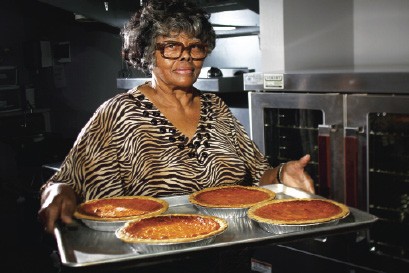When the great Isaac Hayes passed away in August, it was an enormous loss for the city of Memphis, but few corners of the city felt the loss as intensely as that little patch along East McLemore that is the heart of a place called “Soulsville.”
The former location of Stax Records — which Hayes helped build into a cultural titan, first as a session player and songwriter, later as the label’s signature recording artist — is now home to the Stax Museum of American Soul Music and the Stax Music Academy. The former is home to Hayes’ gold-plated Cadillac, among other artifacts. The latter, which educates and mentors local kids via the music that provided so many original Stax artists with a better, fuller life, is home to his spirit.
Hayes was an early supporter of the Soulsville Foundation, which operates the museum and academy, along with, now, the Soulsville Charter School. And he was on the foundation’s Board of National Ambassadors from 2005 until his death.
Now, this week, Soulsville pays tribute by honoring Hayes with its SNAP! After School Winter Concert, dubbed “Go Down Moses: A Tribute to Isaac Hayes.”
The SNAP! After School program mentors local high school students through music education and performance opportunities. With this year’s annual winter concert, the kids will present a musical journey through Hayes’ life and career, with a set list expected to include such Hayes-written or -recorded gems as “Hyperbolicsyllabicsesquedalymistic,” “Walk On By,” “Never Can Say Goodbye,” “Hold On, I’m Comin’,” and “Theme From Shaft.”
And they’ll have some help. Academy artist-in-residence Kirk Whalum, a Memphis native and celebrated jazz and gospel saxophonist, will join the kids, as will R&B vocalist Dave Hollister (formerly of Blackstreet), former Bar-Kay Ben Cauley, local jazz/soul guitarist Gary Goin, and members of the Memphis Symphony Orchestra. Also on the bill is the Soulsville Symphony Orchestra, a rhythm and string orchestra from the Soulsville Charter School.
In addition to honoring Hayes in musical form, Soulsville will give a posthumous presentation of its first Soul Circle Award, designed to honor someone in the music field who has “exhibited the qualities and characteristics that are integral to the Soulsville Foundation’s vision of celebrating music and empowering youth through creativity and education.” Hayes’ old songwriting partner, David Porter, will accept the award on his behalf.
The idea for the award preceded Hayes’ death, but the magnitude of his loss left little doubt who the first recipient should be.
“Isaac’s style and genius made him a living embodiment of everything that made Memphis so unique and special,” Marc E. Willis, President and CEO of the Soulsville Foundation said. “He was one of the earliest supporters of our mission of serving Memphis youth through music and performance.”
The SNAP! Winter Concert takes place at 7 p.m. Thursday, December 18th, at the Germantown Performing Arts Centre. Tickets are $10, with reserved tickets available exclusively at the Stax Museum Gift Shop. For more information, see StaxMusicAcademy.org.
BMA Noms Announced
The Blues Foundation has announced nominees for the 30th annual Blues Music Awards, set to take place on May 7th at the Cook Convention Center in Memphis. West Coast-based band the Mannish Boys lead the way with six nominations. Among the nominees with strong local connections is Greenville, Mississippi’s Eden Brent (who records for the Memphis-based Yellow Dog label), who is up for acoustic album and artist of the year and best new artist debut. In the later category, she’ll compete with north Mississippi upstarts Cedric Burnside & Lightnin’ Malcolm and locals Delta Highway. Among instrumentalists, Brent is up for best pianist, Burnside for best drummer, and Memphis stalwart Billy Gibson for best harmonica player. See Blues.org/BluesMusicAwards for more information.


 by Justin Fox Burks
by Justin Fox Burks  by Justin Fox Burks
by Justin Fox Burks